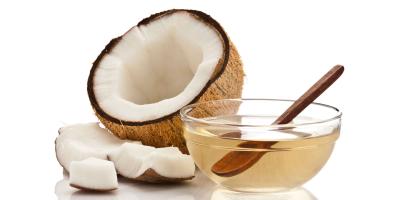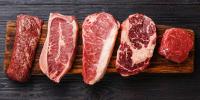
Grain-free diets have become more and more popular for humans, and that's led many pet parents to wonder if their dog should also go grain-free. But before you switch up your dog's food, it's important to understand why grains are used in dog foods and what grain-free has to offer. Is grain-free best for dogs? We look at the details below.
What Is Dog Food with Grain?
In general, most regular dog foods have grains in them. We don't specifically call these out as "grain-containing foods," and it's just an understood thing. If you look at regular dog food, you may see one or more grain types. Some of the most common are:
- Wheat
- Corn
- Barley
- Oats
- Rye
- Rice
- Soy
All the ingredients listed above are types of grains. While there are some gluten-free dog foods, they often will still contain some grains in them. In the case of gluten-free dog foods, they simply don’t include gluten-containing grains such as wheat. Unless a dog food is specifically labelled as grain-free, it’s usually safe to bet that it has some type of grain as one of the main ingredients.
Is Grain Good for Dogs?
This is the big question, and the answer may surprise you. People often think of grains as a type of filler in dog food, but they serve an important nutritional purpose. They are an excellent nutrient source and provide carbohydrates, which help your dog have more energy to run and play. Grains in dog food also ensure your dog is getting plenty of fibre for healthy digestion, and they also supply other essential nutrients such as protein and linoleic acid, which is a fatty acid that is essential for dogs.
What Is Grain-Free Dog Food?
When you see a dog food that is labelled as grain-free, it means that there aren't grains of any type in it. It will also naturally be gluten-free. To keep providing those essential nutrients and carbohydrates that your dog needs, these foods often have extra vitamins and may use nontraditional carbohydrate choices like pea flour or potatoes. Grain-free dog foods may be touted as more natural, but this isn't always the case, so make sure to check the label to see the ingredients.
Is Grain-Free Food Good for Dogs?
You may have heard that grain-free food is better for your dog, but this isn't necessarily supported by veterinary science. There is a common myth that grains in dog food are responsible for food allergies in dogs. However, true food allergies are very rare in pets, and if your dog is allergic to something, it's even less likely for the allergy to be to a grain. In most cases of dog food allergy, the allergy is to a protein, such as chicken or beef.
In general, grain-free foods are OK for your dog, but they don't necessarily add any extra nutritional benefit or protect your dog from developing food allergies. If your dog is overweight or older and less active, feeding a grain-free food can make it harder for your dog to stay at a healthy weight because of the extra carbs used to replace the grains.
If you think that your dog may have a food allergy or seems to be having health issues related to the food he is eating, your first stop should be your veterinarian. Your vet can give your dog a full checkup to rule out any other health problems that may be causing issues and help you better understand what diet and medication options you have for managing your dog's allergies.
Is Grain-Free Dog Food Better Than Regular Dog Food?
For the average dog, grain-free dog food doesn't offer any special health benefits over regular food. But some people, and dogs, just prefer it. If grain-free dog food is your preference, make sure to loop in your vet on your dog’s dietary choices.
Before you switch your dog over, make sure to talk to your vet so that you can ensure that you have the information you need to pick the grain-free option that's the best for your dog's age, weight, breed and lifestyle. It's also important that your dog is getting a balanced diet and the recommended amount of protein, carbohydrates and fats. Look for a dog food that is complete and balanced.
Remember that when you're switching your dog over to a new food, it's important to take it slow and go very gradually so that your dog's digestive system has time to adjust. Gradually mix in the new food with the old, slowly increasing the ratio of new to old, over a period of up to two weeks. If you're changing your dog's food because of suspicions of a food allergy or intolerance, it's also a good idea to keep a diary of your dog's symptoms so that you can tell whether the new food is working — although it can take several weeks for allergies to clear up.
If grain-free seems like the right decision for your dog and you're ready to make the switch, check out Purina Beyond® dog food that comes in both wet and dry varieties.
Related articles



